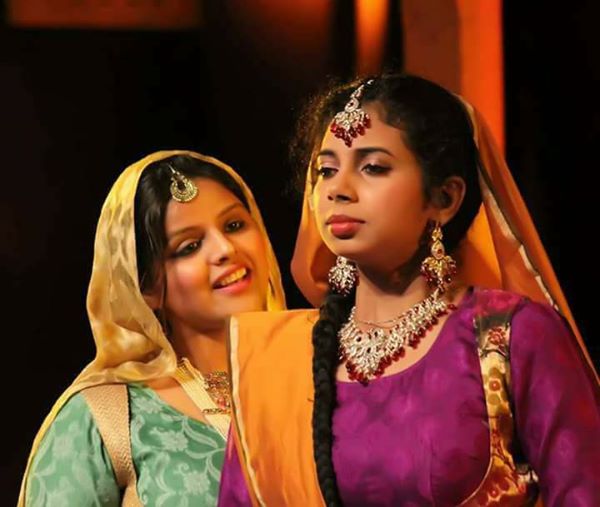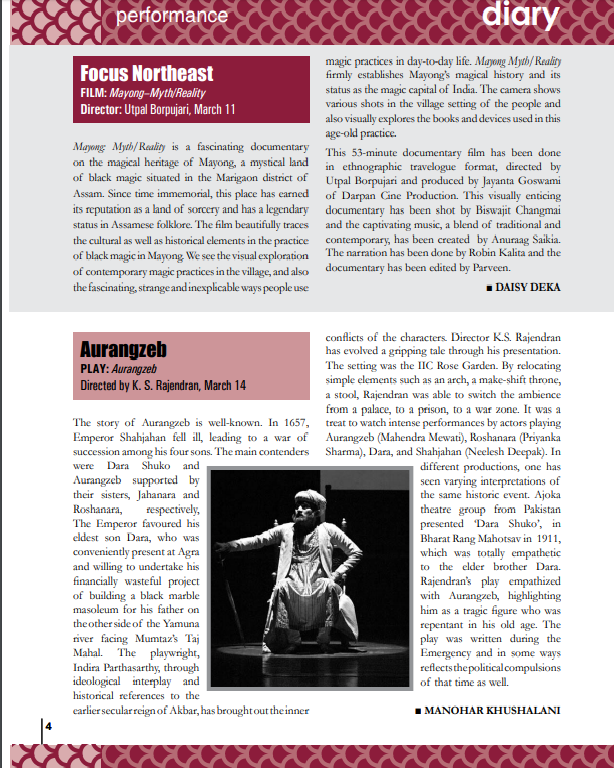Aurangzeb – a critique of the play by Manohar Khushalani
A review of the play performed at IIC in March 2013
First Published in IIC Diary March April 2013

The story of Aurangzeb is well known. In 1657, Emperor Shahjahan fell ill, leading to a war of succession among his four sons, The main contenders were Dara Shuko and Aurangzeb supported by their sisters, Jahanara and Roshanara respectively,
The Emperor, however, favoured his eldest son Dara, who, was conveniently present at Agra and willing to undertake his financially wasteful project of building a black-marble-masoleum for his father on the other side of Yamuna river facing Mumtaz’s Tajmahal. The playwright, Indira Parthasarthy, through Ideological Interplay and historical references to the earlier secular reign of Akbar, has brought out the inner conflicts of the characters.
The Director K.S. Rajendran has evolved a gripping tale through his presentation. The set was erected in the IIC rose garden. By relocating simple elements such as an arch, a make shift throne, a stool, Rajendran was able to switch the ambience from a palace, to a prison, to a war-zone. It was a treat to watch intense performances by actors playing Aurangzeb (Mahendra Mewati), Roshanara (Priyanka Sharma), Dara, and Shahjahan (Neelesh Deepak). In different productions, one has seen very different interpretation of the same historic event.
Ajoka theatre group from Pakistan presented ‘Dara Shuko’, in Bharat Rang Mahotsav, in 1911, which was totally empathetic to the elder brother Dara. Rajendran’s play empathised with Aurangzeb, highlighting him as a tragic figure who was repentant in his old age. The play was written during Emergency and in some ways reflects the political compulsions of that time as well.
Manohar Khushalani
March 20, 2013

First Published in IIC Diary March April 2013